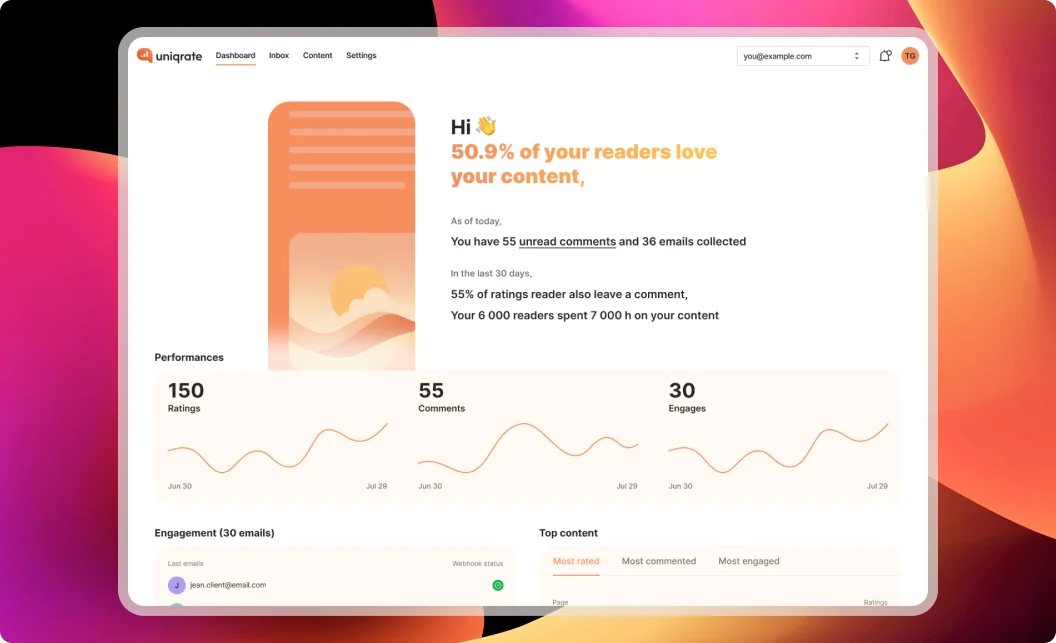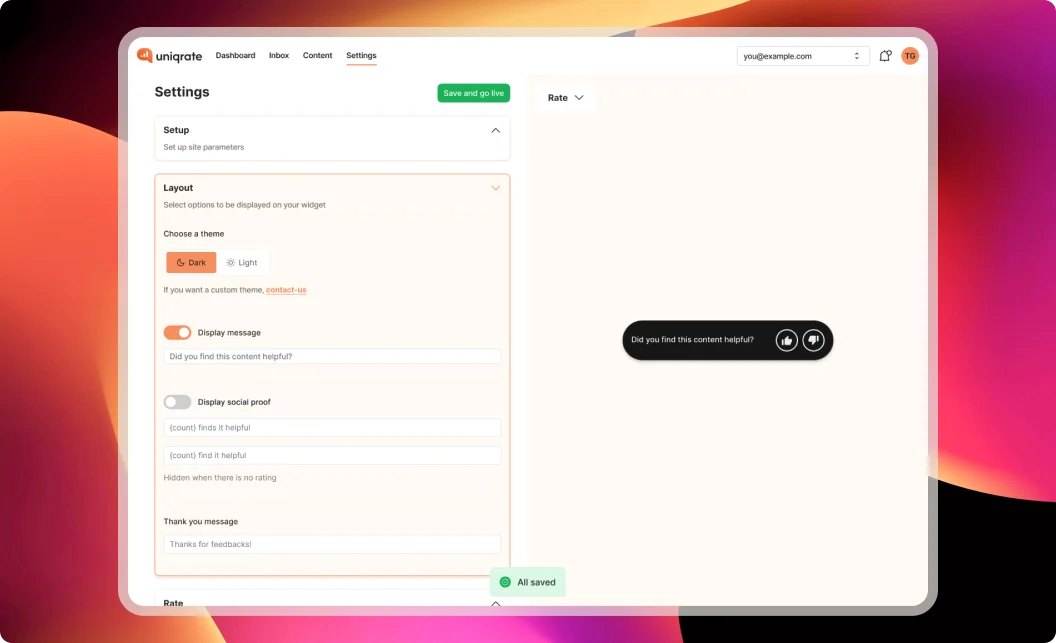The presence of intrusive cookie banners can frustrate readers and disrupt their experience on your blog. For bloggers and technical writers, this distraction can lead to higher bounce rates and lower engagement metrics. By adopting cookie-free analytics tools like Uniqrate, you can eliminate these issues while improving user experience (UX), click-through rates (CTR), and the time readers spend engaging with your content.
Why cookie banners hurt user experience

Cookie banners are often the first thing readers see when visiting your blog. While necessary for compliance with GDPR and other privacy regulations, they introduce several issues:
Interrupting the reading flow
Readers are forced to interact with a modal or banner before accessing your content.Reducing trust
Privacy concerns are heightened when readers are asked to consent to data collection.Breaking website functionality
Poorly implemented banners can interfere with navigation, causing frustration and driving readers away.
Removing cookie banners from your site with a cookie-free solution eliminates these hurdles, improving UX and keeping readers focused on your content.
The advantages of a cookie-free blog
A cookie-free blog not only enhances the user experience but also positively impacts key metrics like CTR and time spent on articles. Here's how:
A seamless first impression
Without a cookie banner, visitors immediately access your content, creating a frictionless experience.Increased trust
By using cookie-free analytics, you show your commitment to privacy, building trust with your audience.Improved engagement
A distraction-free environment allows readers to focus entirely on your articles, increasing time spent on the page.Higher CTR
A smoother UX encourages readers to explore related content, boosting click-through rates across your blog.
How Uniqrate enables a cookie-free experience
Uniqrate is designed for bloggers and technical writers who prioritize privacy and user experience. Here’s how it helps:
No cookies, no banners
Uniqrate operates without collecting cookies, making GDPR compliance effortless and eliminating the need for cookie banners.Reader-focused analytics
Instead of tracking unnecessary data, Uniqrate focuses on metrics that matter, such as engagement rates, feedback, and content performance.Social proof for trust and engagement
Displaying reader feedback like "100 people loved this content" builds credibility and encourages interaction.
Lightweight and fast
Uniqrate’s lightweight implementation ensures your website remains fast, further enhancing the user experience.
Results of going cookie-free
Adopting a cookie-free solution like Uniqrate leads to measurable improvements:
Better UX
With no pop-ups or modals, readers enjoy a distraction-free experience, making them more likely to stay and read.Higher time spent on articles
The absence of interruptions allows readers to engage deeply with your content.Increased CTR
A streamlined experience encourages readers to click on related articles and explore more.
How to make your blog cookie-free with Uniqrate
Sign up for Uniqrate
Visit Uniqrate to create your account.Integrate with your blog
Add the Uniqrate analytics island to your site for a seamless, cookie-free experience.Monitor and improve
Use the Uniqrate dashboard to analyze engagement and refine your content strategy.
Conclusion
Switching to a cookie-free blog is a simple yet powerful way to improve UX, CTR, and time spent on your articles. By removing intrusive cookie banners, you create a seamless and trust-building experience for readers. Tools like Uniqrate make it easy to adopt a cookie-free approach while still gathering valuable insights to optimize your content.
